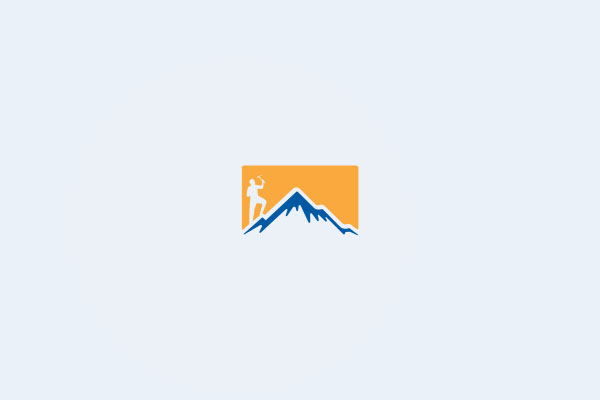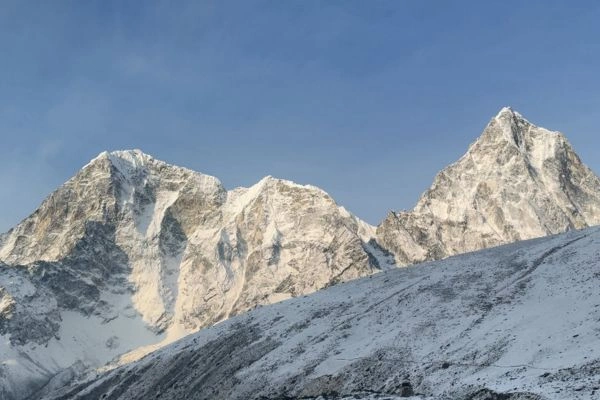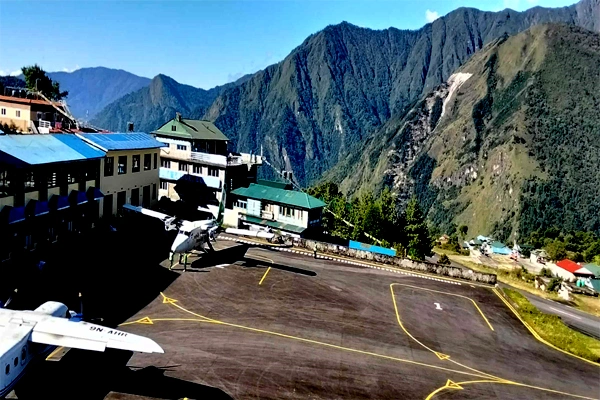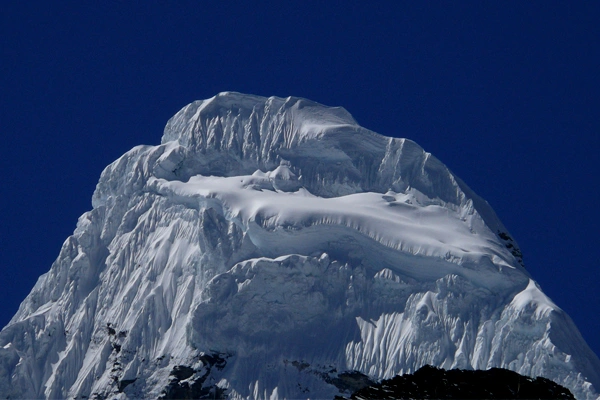Are you planning your Annapurna Base Camp in the month of March? This trek is one of the most popular treks in Nepal & offers breathtaking views of the Himalayas if done in the best season. In this comprehensive guide, we will cover everything you need to know about the “Annapurna Base Camp trek in March”.
Why March is a great time for Annapurna Base Camp Trek?
March is a great month to trek to Annapurna Base Camp for several reasons. The first reason is that the weather is dry & clear with a lower chance of rain in mid-march making for breathtaking views of the mountains.
The temperature during the day while trekking normally gets 10-20 degree Celsius, and at night it gets chilly but manageable.
The second reason is that the trails are also relatively quieter and less crowded compared to the peak seasons, giving you more space & time to enjoy the scenery & culture. Similarly, the full bloom of Rhododendrons & other wildflowers provides a stunning contrast to the snowy peaks & trails.
During March, the Annapurna Base Camp trek is also a great option for starters as they can learn & experience new challenges during trekking. Similarly, with clear weather, the trek can be completed within 10-12 Days. It will also be very easy to find accommodation on the trail during March.
Annapurna Base Camp Trek Difficulty in March:
The Annapurna Base Camp Trek in March is considered a moderate-level trek in terms of difficulty. With a basic training & fitness level, anyone can trek in Annapurna Base Camp during March.
However, the factors such as weather, altitude, itinerary, and fitness level affect the difficulty level of Annapurna Base Camp Trek. So we will explain what factors affect the Annapurna Base Camp difficulty.
Weather Conditions: How unpredictable weather can affect Annapurna Base Camp Difficulty
March marks the end of winter in the Annapurna Region and the beginning of the spring season. However, unpredictable weather is still expected in early March.
During this month the temperature can range from -10°C to 10°C in the worst weather, and 10°C to 20°C during clear weather. Similarly, there is also a high chance of snowfall & rain in early march which can make it difficult to walk smoothly on the trail.
It is recommended to pack warm clothes & proper gear to protect yourself from cold & wet weather. Planning in mid-march & end of March is also a good idea to avoid snowfall & rain.
As the weather is unpredictable in higher elevations, having a flexible date can also save you lots of trouble.
Altitude Sickness: How it makes the trek challenging & how to tackle it?
In terms of altitude, the trek to Annapurna Base Camp involves ascending to 4,130 meters above sea level within 8-10 days. While this can be challenging for some trekkers, the gradual ascent & proper acclimatization can help mitigate the effects of altitude sickness.
Altitude makes the trek challenging because anyone can get altitude sickness. Even if the trekkers are fit & fine or young, they may still get altitude sickness. It is an unpredictable phenomenon, and if it is not treated properly, it can be life-threatening.
Similarly, having affected by altitude sickness can slow down the trekking pace as trekkers may need to take frequent breaks to catch their breath.
Symptoms of altitude sickness include headache, nausea, fatigue, vomiting, & shortness of breath.
How to tackle Altitude Sickness?
If you got any symptoms during the trek, descend to a lower elevation as soon as possible and ask for help from your guide or friend. Take some rest and stay hydrated until you recover fully. Some important tips to help prevent altitude sickness are:
- Properly following the Acclimatization day
- Staying hydrated all the time during trekking
- Descending to lower elevation if necessary
- Taking medication after guide approval
- Eating a balanced diet
Preparing For the Annapurna Base Camp Trek
There are many ways to prepare for Annapurna Base Camp Trek, such as physically & mentally preparing, packing gear, or choosing the best itinerary as per your qualification.
When preparing for an early season like in the month of March, it can be a little tricky to prepare. So, the first thing to be prepared for this trek is by preparing physically & mentally.
How to Physically & Mentally Prepare for Annapurna Base Camp Trek:
Before leaving for the Annapurna Base Camp trek in March, it is essential to prepare yourself physically & mentally. Even if the trek is a moderate level trek, a certain fitness level is necessary for this 4,130m trek.
Usually, we recommend people start preparing or training for the trek at least a couple of months in advance. However, not every people will be in a good health when training for the trek. In this matter, you can consult us in a message or ask a professional or doctor.
Overall, start by incorporating cardio exercises, endurance training, flexibility training and mentally preparing. The first priority is to know your limitation and improve it little by little.
Always start slowly & gradually increase the intensity of the workout to be physically prepared. After that include some relaxation techniques to mentally prepare for the trek.
Exercises like Yoga & Stretching help by increasing focus & keeping motivated.
Packing list for Annapurna Base Camp Trek in March:
Packing gears & equipment for Annapurna Base Camp during the month of March is a little tricky. As there will be an expectation of snowfall & rain during trekking, you will need to pack for both cold & wet weather.
Similarly, when packing gear, it is recommended to pack in layers to make it easy for changing clothes according to the weather. Here is the list of the packing list for the Annapurna Base Camp trek in terms of clothing, footwear, accessories, toiletries, and so on.
Clothing:
- Fleece Jacket
- Down Jacket
- Waterproof Jacket
- Waterproof Pants
- Trekking Pants
- Long-Sleeved Shirt
- Inner Thermal T-Shirt
- Sun Hat
- Warm Gloves
- Buff & Beanie
- Hiking Socks
- Hiking/Trekking Boots
Equipment:
- Backpack
- Duffel Bag
- Sleeping Bag
- Trekking/Hiking Pole
- Sunglasses
- Headlamp
- Water Bottles
- Water Purification
- Oximetry (optional)
- First-aid kit
- Camera
- Power Bank
- Portable Charger
- Trekking Map & Compass
- Snacks
- Water Bladder (optional)
Toiletries:
- Toothpaste
- Toothbrush
- Sunscreen
- Hand Sanitizer
- Personal Medication
- Deodorant
- Wet Wipes
- Toilet Paper
- Lip Balm
- Moisturizer
Miscellaneous:
- Passport
- Cash
- Travel Insurance
- Trekking Permits
- Emergency Contact Information
- Credit Cards
Best Routes for Annapurna Base Camp Trek in March:
March is a great time to trek in Annapurna Base Camp as it falls in the Spring season when the weather is mild & the skies are clear.
No matter which route you take, you will still be blessed with the magical wonders of the Himalayas on the trail. Some popular peaks seen during the trek are Machhapuchhre, Dhaulagiri, Annapurna I, Annapurna II, & Nilgiri.
Without any due, here are some of the best routes to take to reach Annapurna Base Camp in March:
11 Days Annapurna Base Camp Itinerary
11 Days Annapurna Base Camp Itinerary is one of the longest routes you can take to enjoy all the perks that trek offers. This itinerary is best for new trekkers who want to experience trekking activity in Nepal.
While you are on this 11 Days itinerary, you can witness the sunrise view from Poon Hill, & Hot Spring in Jhinu Dada.
- Day 01: Drive to Pokhara by tourist bus (8, 20m/2,700ft) | 6 hours.
- Day 02: Private transport to Nayapul trek to Tirkhedhunga (1,440m) | 4 hours.
- Day 03: Tirkhedhunga to Ghorepani (2,850m/9,130ft) 6 hours.
- Day 04: Hike to Poon Hill trek to Tadapani (2,640m/8,850ft) 5 hours.
- Day 05: Tadapani to Chhomrong (2,170m/7,120ft) 5 hours.
- Day 06: Chhomrong to Himalayan Hotel (2,840m/9,318ft) 5 hours.
- Day 07: Himalayan Hotel to ABC via MBC (4130/12,135ft) 06 hours.
- Day 08: ABC to Bamboo (2,310m/7,578ft) 6 hours.
- Day 09: Bamboo to Jhinu Dada (1,760m/5,774ft) 6 hours.
- Day 10: Trek to Ghandrung Phedi 3 hours private vehicle to Pokhara.
- Day 11: Flight to Kathmandu airport transfer to hotel.
9 Days Annapurna Base Camp Itinerary
9 Days Annapurna Base Camp Itinerary is another perfect itinerary for avid trekkers who have little time in Nepal. You can quickly visit ABC and enjoy the cultural & natural diversity.
- Day 01: Direct Flight to Pokhara & Drive to Kimchi (2:30 hrs drive) & Trek to Ghandruk (1,940m)
- Day 02: Trek to Chhomrong (2,170m) | 5-6 hours
- Day 03: Chhomrong to Bamboo (2,310m) | 5-6 hours
- Day 04: Trek to Deurali (3,230m) | 4-5 hours
- Day 05: Deurali to Annapurna Base Camp (4,130m) via Machhapuchhre Base Camp (3,700m) | 4-5 hours
- Day 06: Back to Bamboo (2,310m) | 7-8 hours
- Day 07: Trek back to Jhinu Danda (1,760m)
- Day 08: Trek to Matque & Drive back to Pokhara
- Day 09: Fly back to Kathmandu
8 Days Annapurna Sanctuary Trek:
A little bit challenging trek for avid trekkers, 8 Days Annapurna Sanctuary trek is for those trekkers who have limited time in Nepal.
You will miss out on both the sunrise view from Poon Hill & Hot Spring in Jhinu Dada. However, it is the best way to save time & finish the trek in a short period of time.
- Day 01: Fly to Pokhara-30 minutes and trek to Tolka (1,790m/5,852ft) 4 hours
- Day 02: Trek to Jhinu Danda (1,760m/5,77ft) 5-6 hours
- Day 03: Trek to Bamboo (2,310m/7,578ft) 6 hours
- Day 04: Trek to Deurali (3,230 m | 10,598ft) 4 hours
- Day 05: Trek to Annapurna Base Camp (4,130m/13,549ft) 5 hours
- Day 06: Trek to Sinuwa (1,980m | 6,495ft) 6 hours
- Day 07: Trek to Ghandruk Phedi and drive to Pokhara
- Day 08: Pokhara to Kathmandu by tourist bus
Accommodation and Food on the Annapurna Base Camp Trek:
The Annapurna Base Camp trail is filled with basic to standard accommodations providing various choices of meals to trekkers.
You can choose your accommodation & meals during the trial or it will depend on the package. However, if you are doing Annapurna Base Camp Trek then you don’t have to worry about accommodation and food.
Accommodation Option on the Annapurna Base Camp Trek:
There are two main types of accommodation available in the Annapurna Base Camp Trail; Tea House & camping. Tea houses are small guestrooms that provide bare necessities including a bed, a blanket, & shared bathroom.
On the other hand, when you camp, you need to bring your own tents, & camping supplies. Camping trek is very popular in the month of March.
Usually, the most popular type of lodging for trekkers in Annapurna Base Camp is a tea house. They offer a comfortable & affordable option for trekkers, with a price range of USD 5 to USD 20 per night.
Since tea houses are excellent places to meet and greet other trekkers as well as learn about culture, you can experience lots of life lessons.
Another choice for individuals who want a more exclusive & private experience is camping. Unlike staying in tea houses, it requires more planning and preparation.
In a camping trek, trekkers need to carry their own tents, sleeping bags, & cooking equipment, while hiring a guide and porter to carry the gear. The costs of a camping trek can range from USD 15 to USD 30 per night.
Food Options on Annapurna Base Camp Trek:
There are plenty of food options available on the Annapurna Base Camp trek, catering to a range of dietary preferences. The most popular cuisine is Nepalese which includes Dal Bhat (Rice & Lentil Soup), Tibetan foods such as momos (dumpling stuffed with Meat or Veg), & Thukpa.
The majority of tea houses also serve Western cuisine such as Burgers, Pizza & Pasta.
Throughout the trip, there are also options for vegetarian & vegan trekkers. However, to ensure that their needs are fulfilled, trekkers with dietary restrictions should inform their guide or the responsible person of a tea house in advance.
Tips for Choosing Accommodation & Food on the Annapurna Base Camp Trek during March
When choosing accommodation in March, consider factors such as budget, comfort level, & cultural experience. Here are some tips for you to choose accommodation & food on the Annapurna Base Camp Trek.
- Choose Accommodation with Good Reviews or ask the tour operator to arrange good accommodation during the trek. With a certain budget, you can get good quality accommodations.
- Try the local cuisine during the trek as it will be fresher & more authentic rather than the dishes that are hard to get and prepare.
- Stick to Vegetarian options as meat is not well preserved in higher elevation tea houses. Vegetarian foods are less likely to cause food poisoning or other digestive issues.
- Bring snacks such as energy bars, dried fruits & another source of energy to help you fuel up during trekking.
Conclusion:
In conclusion, the Annapurna Base Camp trek in March is a unique opportunity to test your physical & mental limits while enjoying the breathtaking view.
With proper preparation, including obtaining necessary permits, packing appropriate gear, & understanding the sign of altitude sickness, you can enjoy this trek to its fullest.
So, book your trip during the best time, March, and embark on the Annapurna Base Camp for a long-lasting lifetime journey.




